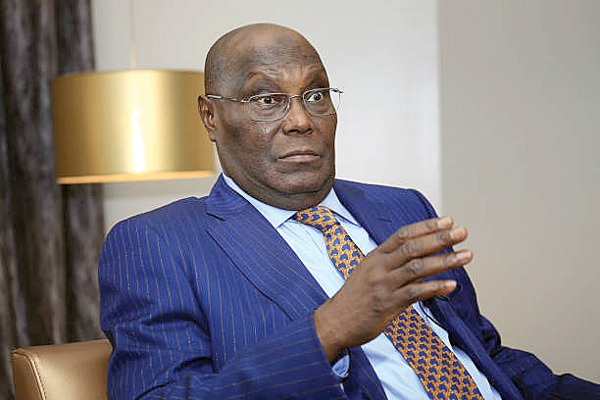India’s manufacturing sector stands to gain significantly if more women join the workforce, with a projected increase in output of 9%, according to the World Bank’s recent South Asia Development Update. This report underscores the untapped potential of female labor in the Indian economy and highlights broader implications for GDP growth. The World Bank also maintained its GDP growth forecast for India at 7% for the fiscal year 2025 and 6.7% for fiscal year 2026, attributing much of this optimism to robust domestic demand and improving economic conditions in neighboring countries like Sri Lanka and Pakistan.
The findings illustrate that enhancing female labor force participation is not just a matter of social equity; it is also a crucial economic strategy. The World Bank’s research indicates that achieving gender parity in labor participation rates could result in a remarkable 51% increase in regional GDP across South Asia. The report reveals that, on average, women’s employment drops by 12 percentage points after marriage in four key South Asian nations—India, Maldives, Nepal, and Bangladesh. This decline points to systemic barriers and cultural norms that restrict women’s economic involvement, suggesting that targeted policy reforms could pave the way for greater workforce inclusion.
Martin Raiser, the World Bank Vice-President for South Asia, emphasized the necessity of key policy reforms aimed at integrating more women into the workforce. Such reforms could include providing better childcare options, improving workplace safety, and establishing equitable hiring practices. By removing barriers to global investment and trade while simultaneously promoting female participation, India could witness accelerated economic growth.
The latest Periodic Labour Force Survey highlights a positive trend, with India’s labor force participation rate (LFPR) for women rising to 41.7% in FY24, up from 23.3% in FY18. This increase reflects a growing acknowledgment of women’s contributions to the economy and signals a shift in societal attitudes towards women in the workforce. However, while the progress is encouraging, there is still a long way to go to achieve gender parity.
The manufacturing sector, in particular, stands to benefit from a more inclusive workforce. Industries that traditionally rely on labor-intensive processes could experience enhanced productivity and innovation by tapping into the skills and talents of women. Furthermore, with India’s ongoing economic recovery and the government’s push for self-reliance through initiatives like “Make in India,” integrating more women into the workforce aligns perfectly with national objectives to bolster manufacturing output and competitiveness.
The implications of these findings extend beyond economic metrics. Increasing female participation in the workforce can lead to better family incomes, improved education for children, and overall enhanced quality of life. As women gain financial independence, they can contribute to household decisions, fostering a more balanced approach to economic and social issues.
In conclusion, the World Bank’s findings make a compelling case for the urgent need to address barriers that hinder women’s participation in the workforce. By prioritizing gender inclusivity in labor policies, India not only stands to enhance its manufacturing output but can also drive significant economic growth. As the nation progresses, harnessing the full potential of its female workforce will be key to achieving sustainable development and equitable prosperity for all.












I dont buy it. More women working means less time for family. Quality of life over GDP growth, anyone?
I disagree with the article. Women should focus on home and family, not work. Lets stick to tradition and not disrupt the status quo.
I dont buy it. More women working wont solve all our problems. What about focusing on improving work conditions instead?
I think focusing on increasing male workforce participation could also boost Indias economy. Why just focus on women?
I dont buy it. Why prioritize women in the workforce when there are bigger issues at play? Lets focus on something else.
I dont buy it. Women entering the workforce wont magically fix Indias economy. Lets focus on other solutions.
I disagree with the idea of pushing more women into the workforce. Lets focus on quality of life instead of just GDP growth.
I dont buy it. More women working means less time for family. Quality over quantity, am I right? Prioritize family life!
I think we should focus on mens workforce participation instead. Equality means equal opportunities for everyone, not just one gender.
Men already dominate the workforce. Womens equality is long overdue. Everyone deserves equal opportunities.
I think we should focus on improving the work environment for women already in the workforce before pushing for increased participation.
I dont buy it. How about we focus on improving working conditions for all, not just pushing for more women in the workforce?
Women deserve equal opportunities in the workforce. Improving conditions benefits everyone.
I disagree with the idea of pushing more women into the workforce. Lets focus on other solutions for Indias economy.
I think encouraging more female workforce participation is great, but why not focus on promoting remote work opportunities for better work-life balance?
I think instead of focusing on increasing female workforce participation, we should prioritize creating more opportunities for men to stay at home and care for the family.
I dont buy it, increasing female workforce participation wont necessarily boost the economy. Lets consider other factors too!
Actually, research shows that increasing female workforce participation does have a positive impact on the economy.
I think the article misses the point. Instead of focusing on women, what about addressing corruption in the government first?
I believe focusing on increasing male workforce participation is equally important. Lets not forget about gender equality for everyone!
I think women should focus on traditional roles rather than entering the workforce. Lets prioritize family values over economic growth.
Women can prioritize both family and career. Its not an either/or situation. Empowerment comes in many forms.
I disagree with the article. Women should focus on traditional roles, not workforce participation. Lets prioritize family values.
I dont buy it. More women working means less time for family. Balance is key, not just boosting numbers.
I dont buy the idea that more women working will automatically boost the economy. Is it really the solution? Lets discuss.
Women in the workforce contribute to economic growth. Lets not underestimate their impact.
I dont buy it. More women working wont magically fix Indias economy. Lets focus on other solutions.
Empowering women in the workforce is a proven strategy for economic growth. Dont ignore the facts.